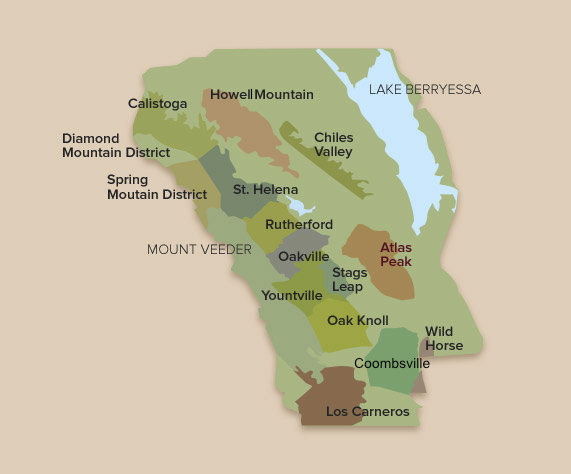Appellations

Napa Valley AVA
Napa Valley, often referred to simply as “Napa,” is one of the most famous and celebrated wine regions in the world. Located in California’s North Coast, the Napa Valley AVA boasts a rich history of winemaking dating back to the 19th century. It is renowned for its stunning landscapes, diverse terroirs, and a remarkable array of world-class wines. The valley stretches approximately 30 miles in length and is flanked by the Mayacamas Mountains to the west and the Vaca Range to the east, creating a range of microclimates that cater to a wide variety of grape varieties.
The Valley is subdivided into distinct sub-appellations, each with its unique terroir and characteristics, contributing to the region’s rich tapestry of wines. The greater AVA covers much but not all of Napa County, here is a list of the sub-appellations:
- Howell Mountain
- Spring Mountain District
- Diamond Mountain District
- Mount Veeder
- St. Helena
- Calistoga
- Chiles Valley District
- Oak Knoll District of Napa Valley
- Oakville
- Rutherford
- Stags Leap District
- Yountville
- Atlas Peak
- Wild Horse Valley
- Coombsville
- Los Carneros
Please note that the Napa Valley AVA and its sub-appellations are subject to change and updates, and new sub-appellations may be designated over time. For the most current and detailed information you can refer to the official website of the Napa Vintners or the Alcohol and Tobacco Tax and Trade Bureau (TTB).